Materials Handling – Rigging or Sling Hitches
On this page
How should you use a vertical hitch?
Back to top- In most cases use more than one sling. A single rope sling load tends to rotate in a twisting action that unwinds cables causing them to weaken.
- Do not use for lifting loose materials, or long or unbalanced loads.
- Tagline should be used when lifting with a single sling to help control the load and prevent twisting and rotation.
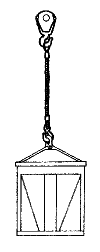
Single vertical hitch
How should you use choker hitches?
Back to topSingle choker hitch
- The sling tightens on a load as it is lifted, but the choke hitch should be pulled tight before the lift and not pulled down during the lift.
- Do not use it on loose bundles or long loads.
- Use choker hitches at 75% or less of the rated sling capacity (sling capacity will depend on the choke angle).
- Use slings that are long enough so that the choker hitch is effective and the "grip" is on the webbing.
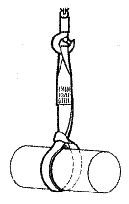
When turning a load:
- Use a doubled choker to turn loads, which is a double up of a single choker hitch, and is different than a double choker hitch.
- When done correctly the sling will remain tight while the load is turning.
- Never use a basket hitch to turn a load.
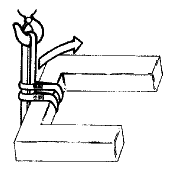
Double choker hitch
- Uses two slings in a choker hitch that are spread to provide stability.
- It provides more contact areas to secure a load.
Double Wrap Choker Hitch
- This hitch compresses the load and prevents it from slipping out of the sling.
- Can be used as a single for balanced short loads or in pairs for longer loads.
- Where overhead space is limited, a double-wrapped choker hitch is acceptable.
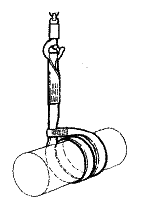
Double wrap choker hitch, single
How should you use basket hitches?
Back to topBasket hitches
- Provide relatively good control and eliminate the tendency of the load to twist, compared with a vertical hitch.
- Do not use basket hitches with a load that is difficult to balance.
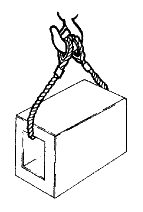
Single basket hitch
Double basket hitches
- Balance loads by keeping slings apart.
- Prevent sling slippage by keeping the angle between the load and sling 60° or more.
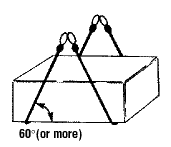
Double Wrap Basket Hitches
- Provide more contact for handling loose material and pipe.
- Tend to draw the load together.
- Can be used as a single (shown below) or in pairs similar to the double basket hitch.
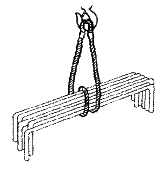
How should you use bridle hitches?
Back to topBridle hitches
- Are made of 2, 3 or 4 single leg hitches.
- Are used for hoisting an object that has lifting lugs or attachments.
- Position the hook over the centre of gravity of the load.
- May need to adjust sling leg lengths with turnbuckles to level the load.
- Check each sling leg angle to ensure the sling is not overloaded.
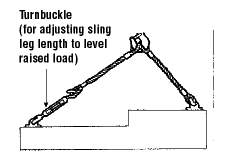
How does the angle of hoisting affect a sling load limit?
Back to top- The angle affects the working load limit. The smaller the angle, the less load a sling can carry. Always check the manufacturers’ information on sling capacities at different angles.
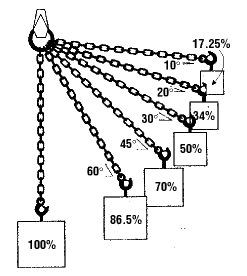
What are some general tips for rigging and hitches?
Back to topIn general, before performing a lift, make sure:
- Lift plans, which outline how the load will be rigged, are developed and approved.
- Lifting equipment, slings and rigging hardware are appropriate for the type and weight of the load, considering the hitch method, sling types and angles, the working load limit, and other factors that could impact the lift.
- Appropriate inspections (e.g., annual and pre-use) and maintenance have been done on the equipment, slings and hardware. Competent or qualified persons may be required to conduct these inspections.
- Only trained and authorized operators perform the rigging and lift.
- The load is securely rigged and balanced.
- Taglines are used for additional control of the load.
- Operators and signalers must be competent and know the hand signals they are to use and follow.
Note: This information is meant to provide general guidance only. Many factors can influence how a load should be safely rigged and what type of hitch to use. Always follow the manufacturer's instructions, health and safety laws, and any applicable standard that applies when determining the proper rigging technique for a lift.
- Fact sheet last revised: 2025-03-11

